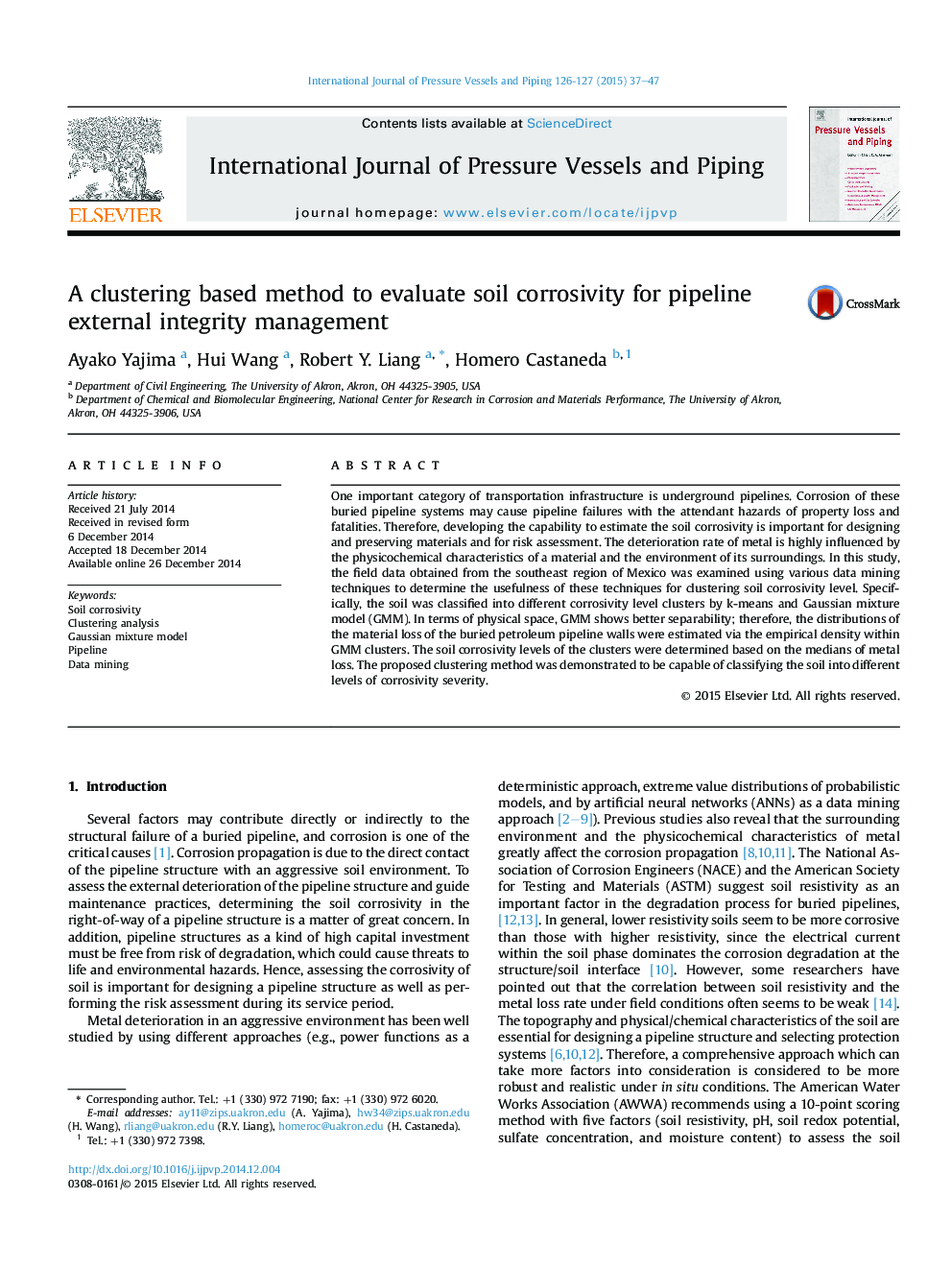| Article ID | Journal | Published Year | Pages | File Type |
|---|---|---|---|---|
| 787793 | International Journal of Pressure Vessels and Piping | 2015 | 11 Pages |
•The clustering approach is applied to the data extracted from a real-life pipeline system.•Soil properties in the right-of-way are analyzed via clustering techniques to assess corrosivity.•GMM is selected as the preferred method for detecting the hidden pattern of in-situ data.•K–W test is performed for significant difference of corrosivity level between clusters.
One important category of transportation infrastructure is underground pipelines. Corrosion of these buried pipeline systems may cause pipeline failures with the attendant hazards of property loss and fatalities. Therefore, developing the capability to estimate the soil corrosivity is important for designing and preserving materials and for risk assessment. The deterioration rate of metal is highly influenced by the physicochemical characteristics of a material and the environment of its surroundings. In this study, the field data obtained from the southeast region of Mexico was examined using various data mining techniques to determine the usefulness of these techniques for clustering soil corrosivity level. Specifically, the soil was classified into different corrosivity level clusters by k-means and Gaussian mixture model (GMM). In terms of physical space, GMM shows better separability; therefore, the distributions of the material loss of the buried petroleum pipeline walls were estimated via the empirical density within GMM clusters. The soil corrosivity levels of the clusters were determined based on the medians of metal loss. The proposed clustering method was demonstrated to be capable of classifying the soil into different levels of corrosivity severity.
